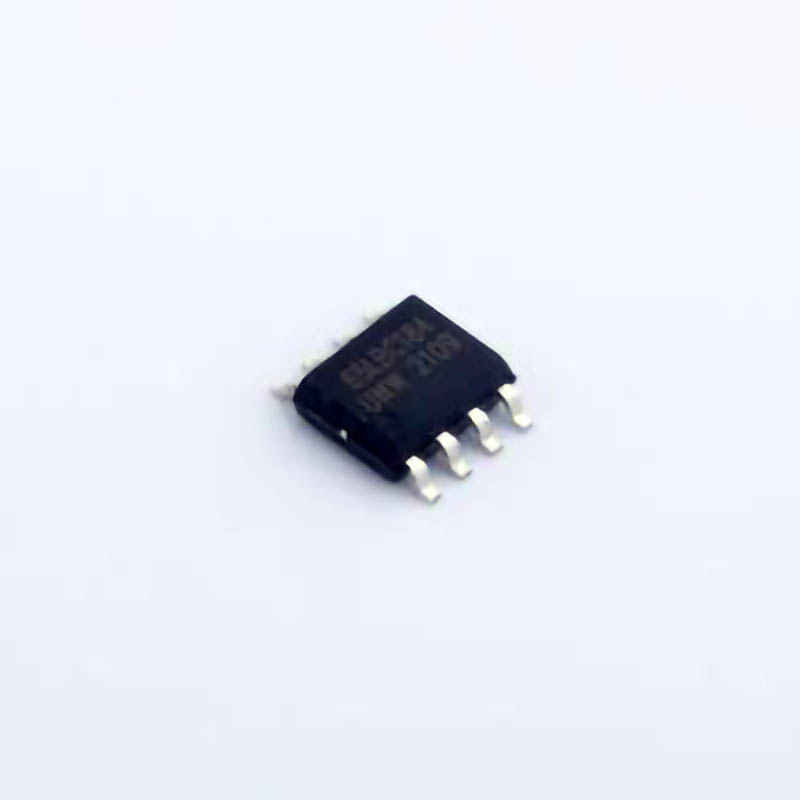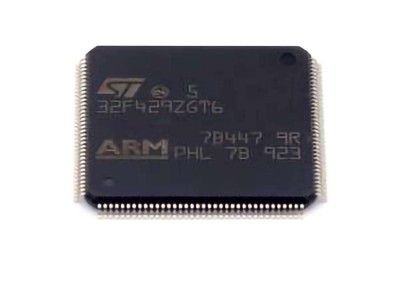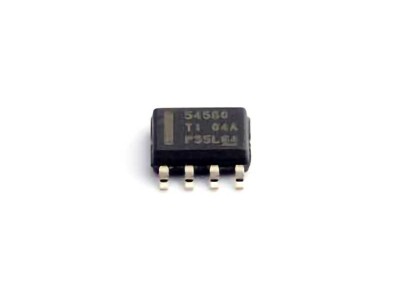
The SN65LBC184DR is a popular differential line driver from Texas Instruments, widely used in Communication systems, automotive applications, and industrial circuits. However, users may sometimes face issues when working with this device. This article explores common problems and practical solutions to troubleshoot and ensure optimal performance of the SN65LBC184DR.
SN65LBC184DR, differential line driver, troubleshooting, common issues, Texas Instruments, signal integrity, voltage issues, communication systems, line driver problems, industrial circuits.
Understanding the SN65LBC184DR and Common Issues
The SN65LBC184DR is a differential line driver designed to transmit high-speed data over long distances. As a member of the family of RS-485/RS-422 drivers, it plays a critical role in various communication protocols, including industrial control systems, automotive diagnostics, and telecommunications. Although the device is highly reliable and robust, users may encounter occasional issues when integrating the SN65LBC184DR into their systems.
In this section, we’ll explore some of the common problems users face when working with the SN65LBC184DR, along with the potential causes for these issues.
1. Signal Integrity Problems
Signal integrity is one of the most critical aspects when working with differential drivers like the SN65LBC184DR. Poor signal integrity can lead to data errors, noise interference, and even complete communication failures. Signal degradation can occur due to several reasons, such as improper PCB design, incorrect grounding, and the use of poor-quality cables.
Cause:
The primary cause of signal integrity issues with the SN65LBC184DR is typically a mismatch in impedance between the driver, the transmission line, and the receiver. If the transmission line has a different impedance than expected, reflections can occur, leading to signal degradation. Additionally, insufficient decoupling capacitor s or poorly placed ground planes can exacerbate the issue.
Solution:
To ensure proper signal integrity, make sure that the PCB traces are designed to match the characteristic impedance of the transmission line (usually 120Ω for RS-485). Proper termination resistors at both ends of the transmission line can also help reduce reflections. Adequate decoupling capacitors (e.g., 0.1µF) placed close to the Vcc and GND pins of the driver will also improve performance.
2. Voltage Level Mismatch
Another common issue that users may face with the SN65LBC184DR is a voltage level mismatch between the driver and receiver. This problem can lead to incorrect data transmission, improper logic levels, or a complete lack of communication.
Cause:
The SN65LBC184DR operates with a supply voltage range from 3.3V to 5V. If the voltage level is incorrectly set or if the ground connection is poorly established, the communication signal may not be properly recognized by the receiver. This could be due to excessive voltage drop, incorrect Power supply, or a failure in the logic-level conversion.
Solution:
Ensure that the supply voltage to the SN65LBC184DR is within the specified range. Double-check the ground connection and verify that the signal lines are properly driven with respect to ground. If you’re interfacing the driver with devices that operate at different voltage levels, use appropriate level shifters or ensure that the voltage levels are within the tolerance of both the driver and receiver.
3. Bus Contention
RS-485 networks, in which the SN65LBC184DR is commonly used, are designed for multipoint communication, which means that multiple devices can be connected to the same bus. However, bus contention can occur if two drivers are attempting to send data at the same time. This can result in corrupted signals and data loss.
Cause:
Bus contention happens when two or more differential drivers (like the SN65LBC184DR) are enabled simultaneously and trying to drive different levels on the same bus. This situation can damage components and lead to data transmission failures. It often occurs due to incorrect driver enable logic or improper configuration of the bus system.
Solution:
To prevent bus contention, ensure that only one driver is active at a time. This can be achieved by properly managing the driver enable lines (such as the DE pin) and ensuring that other drivers are disabled when not in use. Additionally, make use of fail-safe mechanisms like biasing resistors on the bus to guarantee that the bus is idle when no driver is transmitting data.
4. Overheating and Power Supply Issues
The SN65LBC184DR, like any other electronic component, can experience overheating if the power supply is unstable or if there is excessive current draw. Power supply fluctuations can lead to a decrease in the device’s performance and may even cause damage if left unchecked.
Cause:
Excessive power supply noise, inadequate decoupling, or improper power supply voltages can lead to issues such as overheating. Similarly, a lack of proper heat dissipation can cause thermal issues that lead to erratic behavior or failure of the device.
Solution:
Make sure that the power supply used is stable and well-regulated within the range specified by the manufacturer (3.3V to 5V). To minimize noise, use appropriate decoupling capacitors close to the power pins of the SN65LBC184DR. For high-speed systems, low ESR (Equivalent Series Resistance ) capacitors are recommended. Additionally, ensure that the device is operating within its thermal limits by checking its datasheet for thermal recommendations.
Advanced Troubleshooting and Practical Solutions for the SN65LBC184DR
In this section, we’ll dive deeper into more advanced troubleshooting techniques and practical solutions for resolving issues that can arise when working with the SN65LBC184DR. These issues typically relate to specific application scenarios, such as long-distance transmission, high-speed data rates, or special environmental conditions.
5. Long-Distance Communication Challenges
When using the SN65LBC184DR for long-distance communication, the signal quality can degrade over time, especially at high data rates. The longer the cable or wire, the more susceptible the signal becomes to attenuation, crosstalk, and noise.
Cause:
At long distances, the signal sent by the SN65LBC184DR driver may lose its integrity due to factors such as cable resistance, parasitic capacitance, and external interference. Additionally, the RS-485 standard allows for a maximum of 32 devices on the bus, and long cable runs can further contribute to issues like voltage drops, signal reflections, and ground loops.
Solution:
For long-distance transmission, consider using lower data rates to maintain signal integrity. Additionally, using twisted-pair cables with proper shielding can reduce external interference. Implementing terminators at the ends of the transmission line (usually 120Ω resistors) helps prevent signal reflections. If the line is too long, you can also use repeaters or bus extenders to regenerate the signal and improve communication over greater distances.
6. Faulty Termination and Improper Bus Configuration
Improper bus termination is one of the most common causes of issues in RS-485 networks. Without proper termination, signals can reflect back into the transmission line, leading to distorted signals and data loss. This is especially true in high-speed applications where signal timing is critical.
Cause:
If the bus is not properly terminated, it can cause reflections, which may result in signal degradation or data transmission errors. This is often caused by the absence of termination resistors at the ends of the line, or the use of incorrect resistor values.
Solution:
Ensure that termination resistors are placed at both ends of the differential line. These resistors should be of the same value as the characteristic impedance of the transmission line (typically 120Ω). Additionally, use bias resistors to ensure the bus is properly biased when no device is transmitting. Check the line length and ensure that the number of devices connected to the bus does not exceed the RS-485 specification.
7. Electrostatic Discharge (ESD) Protection
The SN65LBC184DR is sensitive to electrostatic discharge (ESD), which can lead to permanent damage or erratic behavior of the device. ESD can occur during handling or from external sources of electrical interference.
Cause:
Electrostatic discharge occurs when there is a sudden flow of electricity between two objects with different electrical potentials. This can occur when handling the SN65LBC184DR without proper grounding or when the device is exposed to electrical fields.
Solution:
To prevent ESD-related issues, ensure that the SN65LBC184DR is handled in an ESD-safe environment. Use ESD wrist straps, mats, and grounding techniques when working with the device. Additionally, consider using external ESD protection components, such as TVS (Transient Voltage Suppression) diodes, to protect the device from high-voltage transients.
8. Diagnostic Tools for Troubleshooting
When all else fails, using the right diagnostic tools can help pinpoint the exact cause of the issue. Oscilloscopes, logic analyzers, and network analyzers are valuable tools in diagnosing communication problems related to the SN65LBC184DR.
Cause:
In many cases, the root cause of issues can be hard to diagnose without proper equipment. Common symptoms, such as signal distortion or erratic communication, may have multiple underlying causes that require in-depth analysis.
Solution:
Using an oscilloscope to visualize the waveforms of the differential signals on the transmission line can help identify signal integrity issues, noise, and other anomalies. Logic analyzers can help decode data and identify protocol-specific problems. Network analyzers are useful for troubleshooting bus-related issues such as reflections or impedance mismatches.
Conclusion
The SN65LBC184DR is a versatile and reliable differential line driver that offers excellent performance in communication systems. However, like any electronic component, it can present challenges in specific applications. By understanding the common troubleshooting issues and applying the appropriate solutions, users can maximize the performance and reliability of the SN65LBC184DR in their designs.
From signal integrity issues and voltage mismatches to bus contention and power supply problems, the key to troubleshooting lies in careful design, systematic testing, and the use of proper diagnostic tools. By following best practices and addressing common issues proactively, engineers can ensure that their RS-485 communication systems run smoothly and efficiently, avoiding costly errors and downtime.
If you are looking for more information on commonly used Electronic Components Models or about Electronic Components Product Catalog datasheets, compile all purchasing and CAD information into one place.


